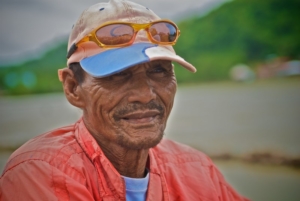UNDERSTANDING TUBERCULOSIS IN THE PHILIPPINES
 Alongside malaria and HIV, tuberculosis (TB) is one of the main communicable diseases wreaking havoc on the lives of vulnerable populations in developing countries. In the Philippines, the situation is particularly challenging – the WHO estimates that in 2019, up to 1 million Filipinos had active TB, the third highest prevalence in the world. Around 70 people die in the country every day from this completely curable disease.
Alongside malaria and HIV, tuberculosis (TB) is one of the main communicable diseases wreaking havoc on the lives of vulnerable populations in developing countries. In the Philippines, the situation is particularly challenging – the WHO estimates that in 2019, up to 1 million Filipinos had active TB, the third highest prevalence in the world. Around 70 people die in the country every day from this completely curable disease.
Solutions are not far from reach, but understanding the multifaceted reasons why TB persists in the Philippines is key to implementing effective measures to combat the spread of the disease.
Tuberculosis: An Overview
Tuberculosis is a bacterial infection that typically attacks the lungs, resulting in coughing, chest pain, fatigue and fever symptoms. It is spread through airborne droplets released through coughing, sneezing and even speaking, making it highly transmissible. As with any bacterial disease, those with weakened immune systems are most at risk of severe illness or death. People who suffer from malnutrition or who already have conditions like HIV or diabetes are particularly vulnerable.
With a rapidly growing HIV epidemic and the World Food Programme reporting that 64% of its population is “chronically food insecure,” it is not surprising that TB is so prevalent in the Philippines.
Links to Poverty
The organization Health Poverty Action puts it simply: “Poverty and TB are closely linked.” The spread of tuberculosis in the Philippines is closely associated with the living conditions of its sufferers – the Philippine National Health Research System (PNHRS) states that TB is particularly common among the urban poor, who often have inadequate access to health care.
A report from the Philippine Institute for Development Studies also cites overcrowded living conditions as a factor that exacerbates the spread of TB among the urban poor.
Another issue standing in the way of eradicating TB is the financial barriers to treatment. A 2022 study published in ‘Global Health’ surveyed Filipinos living in a high-TB area and found that many cited “indirect expenses,” like the cost of transportation, as a factor that would incite them to avoid seeking care.
As drug-resistant TB becomes an ever-growing problem, many Filipinos are forced to travel to multiple different hospitals and health facilities to collect different prescriptions, at significant personal cost. This is because drug-resistant TB requires sufferers to cycle between different drugs in order to treat the disease. This type of treatment is expensive, especially since health services and the National Tuberculosis Program are “crucially underfunded,” according to researchers from the University of the Philippines.
The ‘Global Health’ study also noted the risk of unemployment as an important barrier to treatment – many respondents of the survey feared that they would be forced to take leave from their jobs if it was revealed that they were infectious, or that they would be unable to work due to side effects from treatment. In short, many simply could not afford to not work.
Fighting For Change
Although the Filipino government has made efforts to mitigate the cost to low-income households of TB treatment with its aforementioned National Tuberculosis Program, a 2022 study found that 42% of households with TB were still suffering “catastrophic costs” associated with the disease.
However, there have been some moderate steps forward. For example, during the COVID-19 pandemic, the Global Fund and the Philippine Business for Social Progress (PBSP) expanded an existing initiative that employed motorcycle riders to transport specimens from patients’ homes to hospitals for evaluation – they can now transport medication from health care facilities to patients’ homes, alleviating the financial burden of transportation for TB patients.
In addition, in 2020, the Filipino Department of Health and the WHO Country Office in the Philippines created a “package of digital solutions,” aiming to collect more data and facilitate the reporting of TB cases, an area that still needs work. The applications do not require an internet connection and are able to track patient progress, allowing health care providers and patients easier access to information about TB treatment. This way, patients do not need to travel to the hospital just to remain informed about their treatment plans.
Looking Ahead
Eradicating tuberculosis in the Philippines is an achievable goal, but it will take a lot of time, effort and funding. Poverty is a key driver of communicable diseases, and the case of tuberculosis in the Philippines exemplifies this fact. A 2018 study found that eradicating global poverty would result in a 33% reduction in tuberculosis cases. Working towards this goal will be instrumental in saving lives, increasing productivity and eliminating tuberculosis in the Philippines for good.
– Abbi Powell
Photo: Flickr
